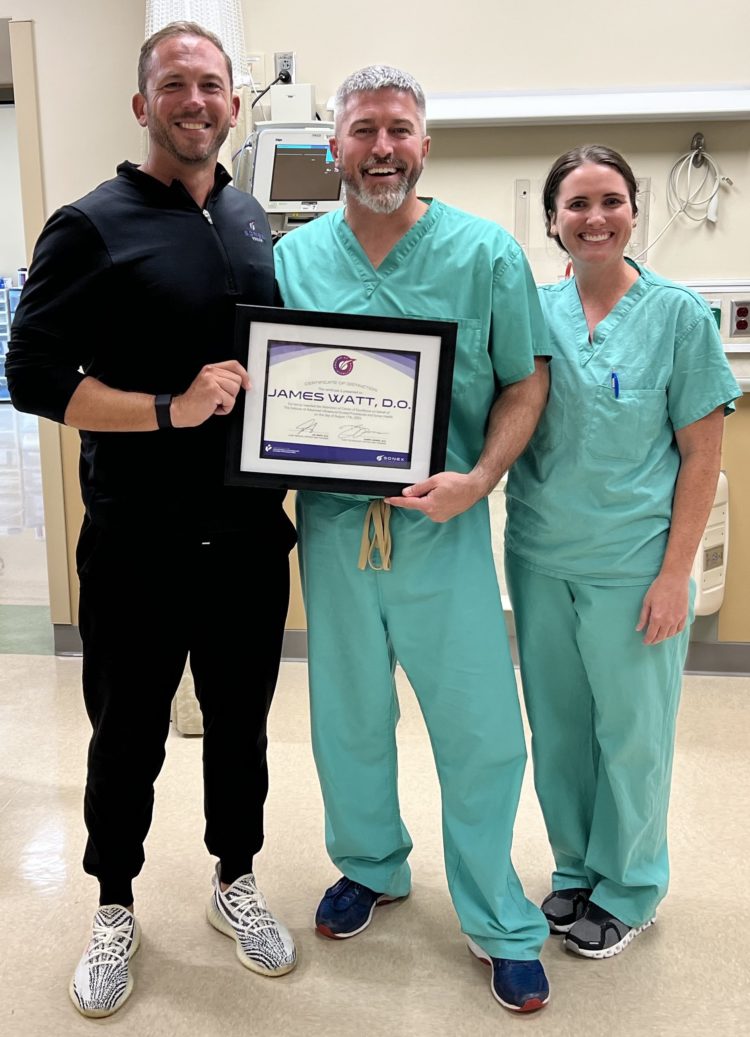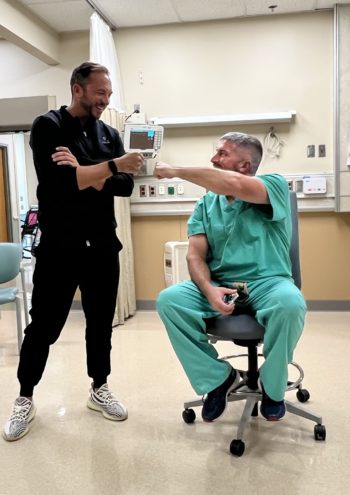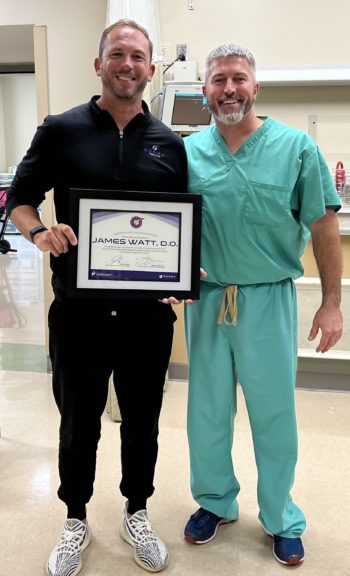
Hesitation Turns to Enthusiasm for a Florida Orthopedic Surgeon
Dr. James Watt focuses on upper extremity, fingertips to shoulders, at his practice in Fort Walton Beach, Florida. Carpal tunnel release (CTR) procedures make up about 20 percent of his practice, so he was comfortable with his traditional surgical approach and hesitant to try something new. That is, until Dr. Watt met a Sonex Health representative who introduced him to the value of ultrasound, including carpal tunnel release with ultrasound guidance (CTR-US).
“He told me it offered excellent patient recovery and that I’d get good, if not better, outcomes. I told him, ‘That’s not possible’,” says Dr. Watt with a laugh. As he heard more, though, he says he was intrigued by the benefits of CTR-US but was initially concerned about the training required to learn the new approach.
Thorough Training

Once Dr. Watt committed to trying CTR-US, the Sonex Health team set him up with a thorough, hands-on training at the company’s headquarters in Eagan, Minn., as well as cadaver labs at his own practice. “With my time in Eagan and the labs, I left feeling like I could do anything because it was great training, super informative,” says Dr. Watt, who began offering the technique to patients in 2021.
Now, at 150 patients treated and growing, Dr. Watt is pleased with this approach. “Once I started doing it, it was a no-brainer because my patients were doing better and healing quicker.”
He typically sees his patients three days post-procedure, and noticed they were getting back to their activities in record time. “With a traditional, surgical approach, I’d see patients even eight- or 10-days post-op, and they hated their scar and were still in some pain,” says Dr. Watt. “Sometimes they’d still feel sore six weeks later. That’s not been the case with my carpal tunnel release using ultrasound guidance. A tiny scar, if any, and very little down time.” He notes that he rarely, if ever, has to see the patients again who’ve undergone the ultrasound-guided approach.
Surprisingly, not all of his patients opt for the new approach, mostly because they don’t want to be awake during the procedure. Those patients who opt for general anesthesia, he says, have to undergo additional medical clearances, arrange for transportation, endure stitches, and take time to heal before they resume their activities. “These are patients who can barely handle the physical exam in the office. Patients who opt for ultrasound are glad they can drive themselves to the procedure and get back to activities quickly and without stitches.”
Back to Work as Soon as Possible

Dr. Watt says he recently performed the technique on his business partner, a fellow surgeon. “I did both of his wrists on a Monday, and he was back to operating on patients that Friday,” says Dr. Watt. “If he had opted for a traditional surgery, he wouldn’t have had both wrists done at once. And because of the extended recovery time, his patients wouldn’t have been able to have their surgeries in a timely manner, and his practice would have suffered,” notes Dr. Watt.
Center of Excellence
Dr. Watt’s dedication to attaining the best outcomes for his patients is why The Institute of Advanced Ultrasound Guided Procedures has named him a national Center of Excellence Physician — which makes Dr. Watt very proud.
“To me, it means we put in a lot of hard work and the results are real. It’s not smoke and mirrors. It’s something that legitimately works and that can be implemented in your practice and make it even stronger,” says Dr. Watt.
Learn more about The Institute of Advanced Ultrasound Guided Procedures and our training programs to begin your MSK ultrasound training today.
